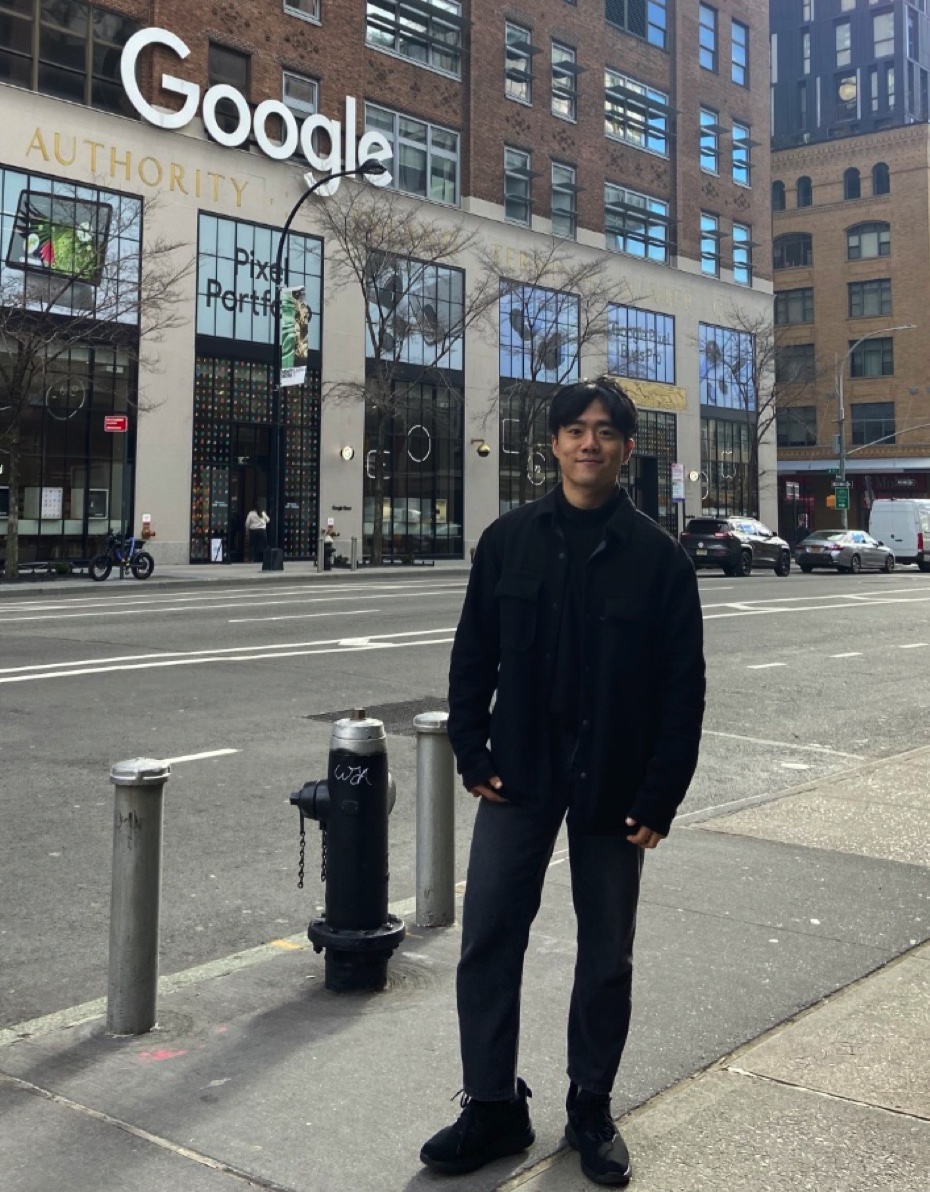Causal Inference Meets Deep Learning: A Comprehensive Survey
5. DL with Causal Inference
Causal discovery
= Inferring causal relationships from data
DL + CI
Traditional DL
- Relies on large IID datasets
- Focus on correlation rather than causation
- Correlation-based models: Unstable and sensitive to small data changes
Causal learning
- Improve generalization, stability, and interpretability in DL
Causal Inference + DL
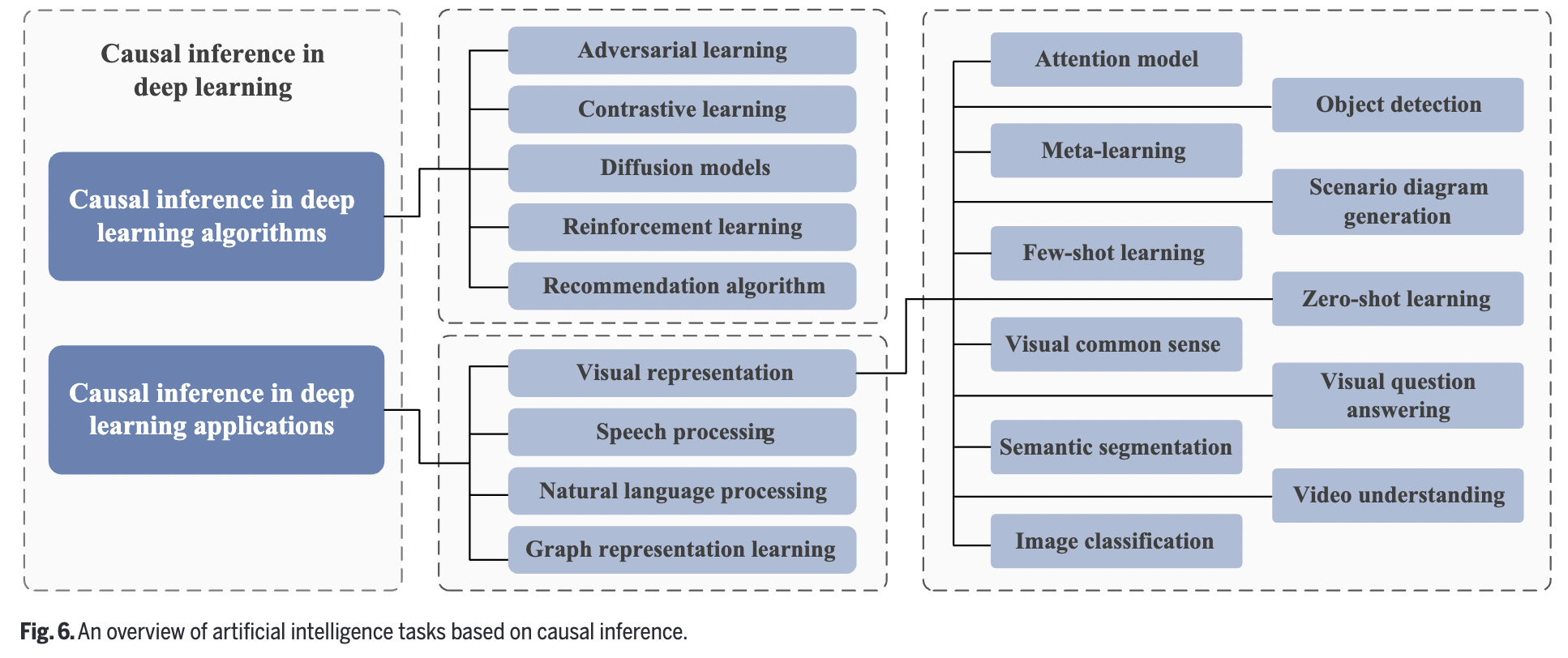
(1) Adversarial Learning
- Goal: Maintaining model stability/robustness
- In the presence of malicious environments
- How? By adding perturbations to real samples
- NN will misled in their judgments by them!
- Divided into
- (1) Adversarial attacks
- (2) Adversarial defenses
a) Adversarial attack
Aim to generate adversarial samples more efficiently
- By manipulating the input samples
Adversarial attack + Causal Inference
-
Testing for conditional independence in a multi-dimensional dataset
\(\rightarrow\) Can be challenging!!
-
Adversarial attack the IID distn
- [Humans] May not perceive these changes!
- [Model] Modified samples can cause intervention for the model!
-
Causality can mitigate the impact of adversarial attacks on DL
Ren et al. [161]
- Employ Transformer as a tool to construct a causal model
- Model = Explains the generation and performance of adversarial samples
- Propose a simple and effective strategy to defend against adversarial attacks
Cai et al. [162]
- Novel adversarial learning framework based on the causal generation method
- Generates counterfactual adversarial examples …
- By altering the distn through intervening variables
b) Adversarial defense
Aims to offer more effective protection against adversarial samples
Zhang et al. [163]
-
Cause of adversarial vulnerability in DNNs = Model’s reliance on “false correlations”
-
Construct causal graphs
- To model the generation process of adversarial samples
-
Propose an adversarial distribution alignment method
- To formalize the intuition behind adversarial attacks.
-
Eliminate the differences between natural & adversarial distns
\(\rightarrow\) Robustness of the model is improved!
c) GAN
CausalGAN = 2-stage causal GAN
-
Kocaoglu et al. [166]
- Stage 1) Trains a causal implicit GAN on binary labels
- Stage 2) New conditional GAN to help the generator sample from the correct intervention distribution.
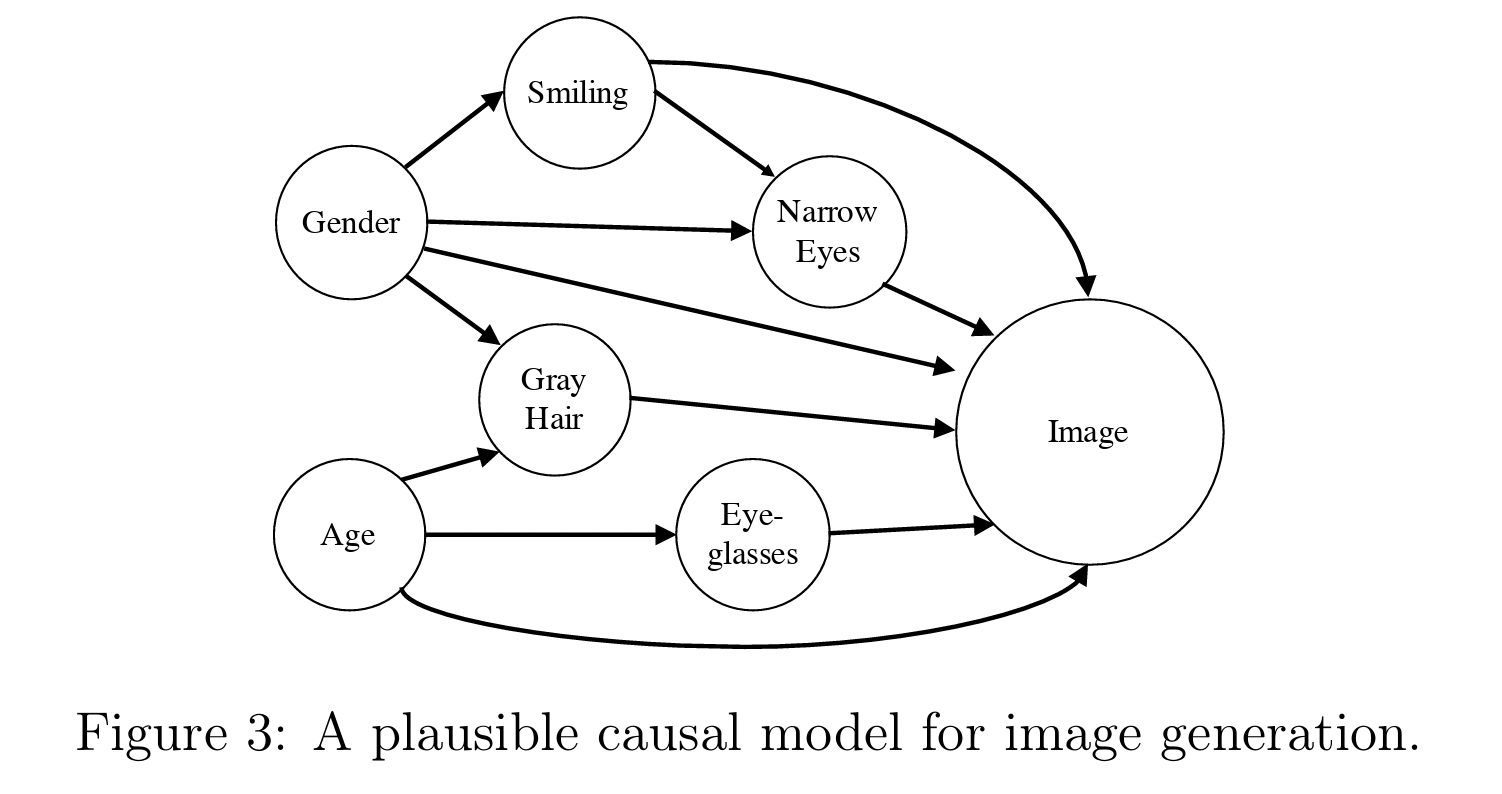
Scalable generative causal adversarial network (CAN)
-
Moraffah et al. [167]
-
Limitation of Causal GAN
= Causal graph constructed in CausalGAN relies on known labels!
-
CAN: Learns the causal relations from the data iteslf!
-
Structured into 2 parts:
- (1) Label generating network (LGN)
- Learns causal relationships from data and generates samples
- (2) Conditional image generating network (CIGN)
- Receives labels and generates the corresponding images
- (1) Label generating network (LGN)
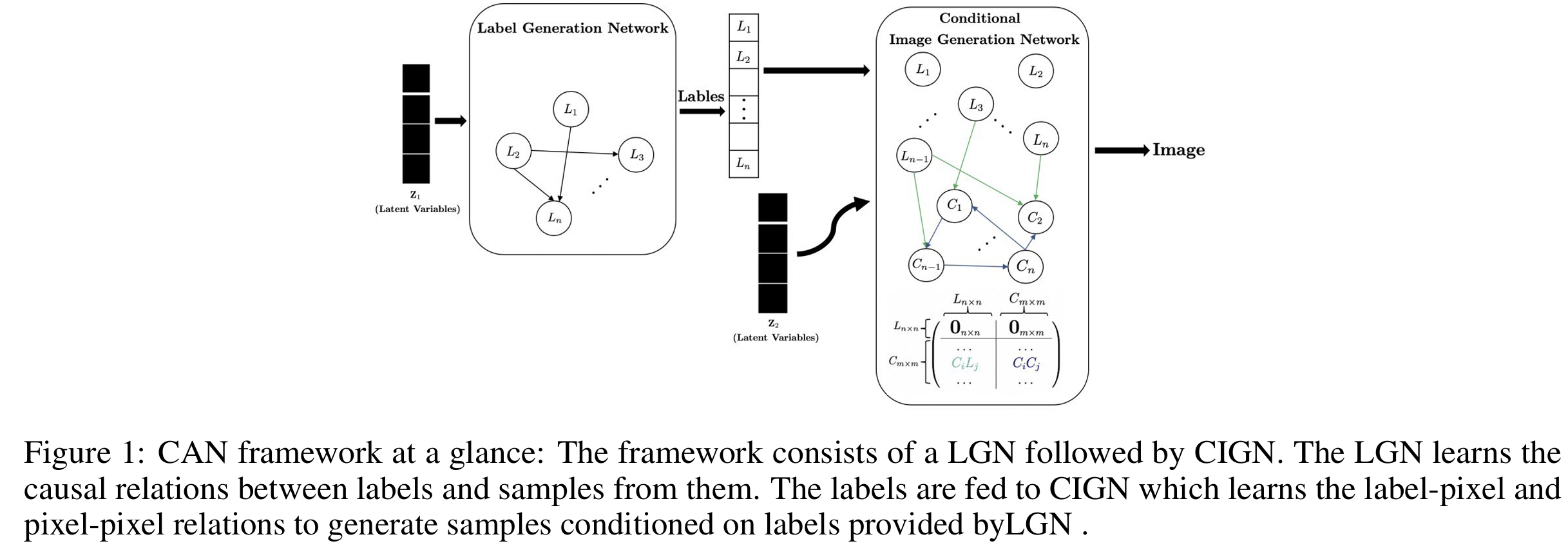
Causal generative neural networks (CGNNs)
-
Goudet et al. [168]
-
Learn data distributions with causal construction generators
Causal-TGAN
-
Wen et al. [169]
-
Goal: Generate synthetic tabular data using the tabular data’s causal information
-
Multiple causal processes are captured by building an SCM
SCIGAN: Hierarchical discriminator
-
Bica et al. [170]
-
Estimatie counterfactual outcomes at successive interventions.
-
Goal: Estimatie counterfactual outcomes at successive interventions.
-
How? Significantly modified GAN model
-
Generate counterfactual outcomes
\(\rightarrow\) Used to learn an inference model ( with standard supervised methods )
-
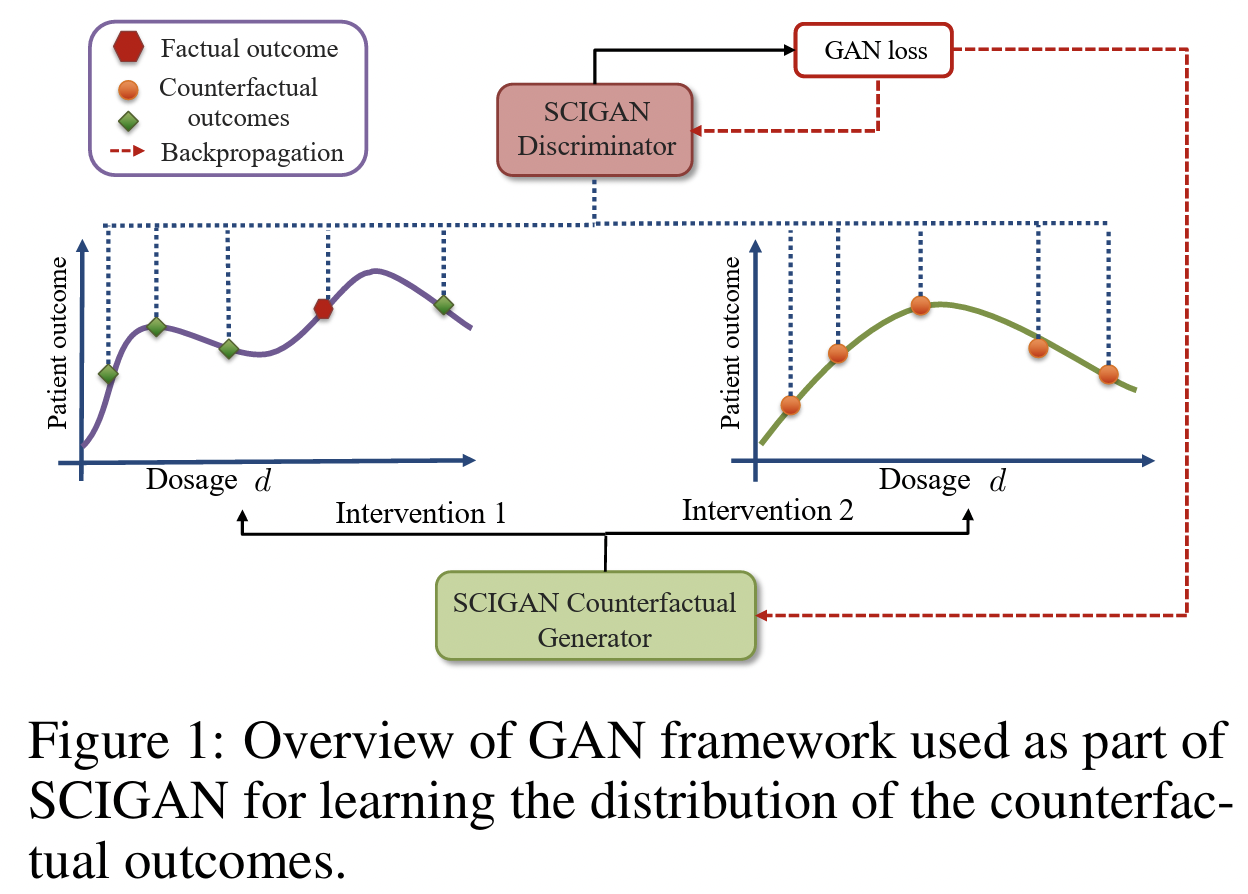
(2) Contrastive Learning (CL)
a) Supervised contrastive learning
\(C^2L\): Causal-based CL
-
Choi et al. [171]
- To improve the robustness of “text categorization” models
- Candidate tokens are selected based on attribution scores
- Causality of these candidate tokens
- Verified by evaluating their individualized treatment effect (ITE)
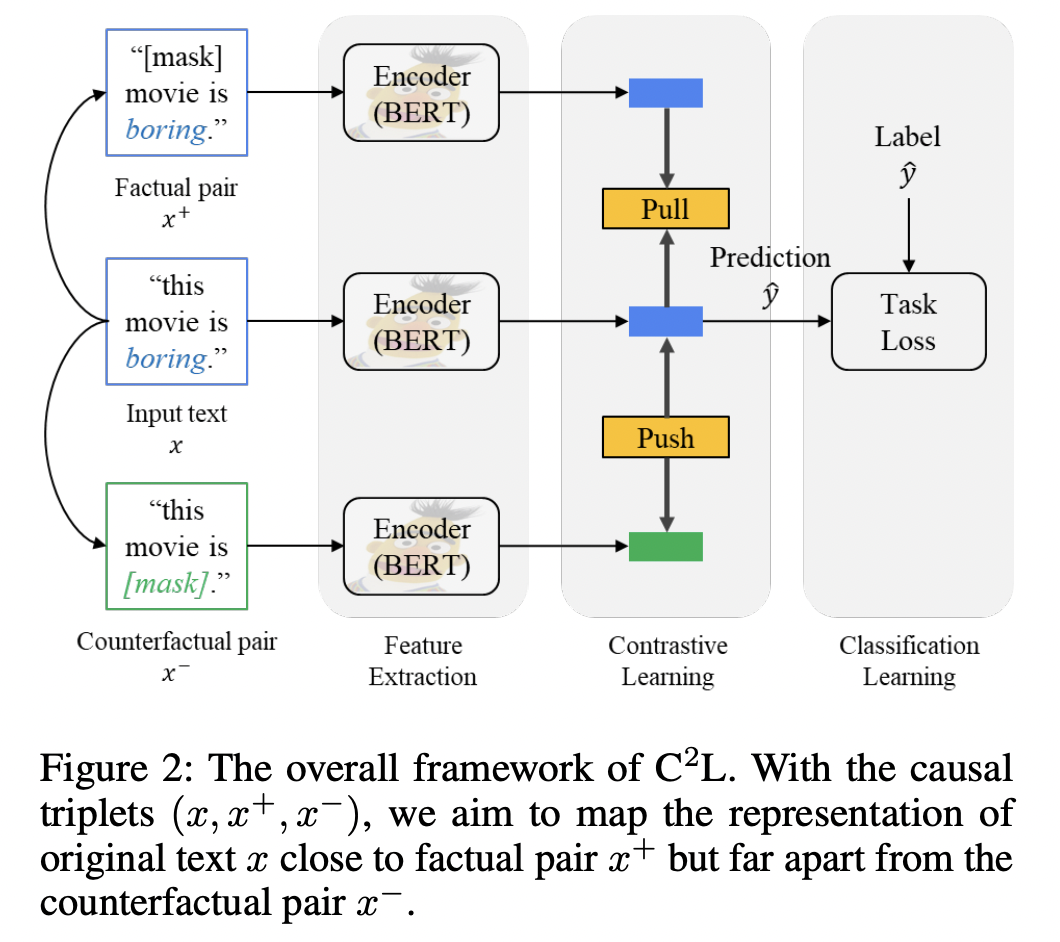
Proactive Pseudo-Intervention (PPI)
-
Wang et al. [172]
-
Causal intervention-based CL (for visual problems)
-
Pseudo-interventions are synthesized from observational data using CL
\(\rightarrow\) Reduces the model’s dependence on image features that are strongly correlated with the target label but not causally related
-
Result: Addresses the issue of DNNs over-relying on non-causal visual informationin image classification
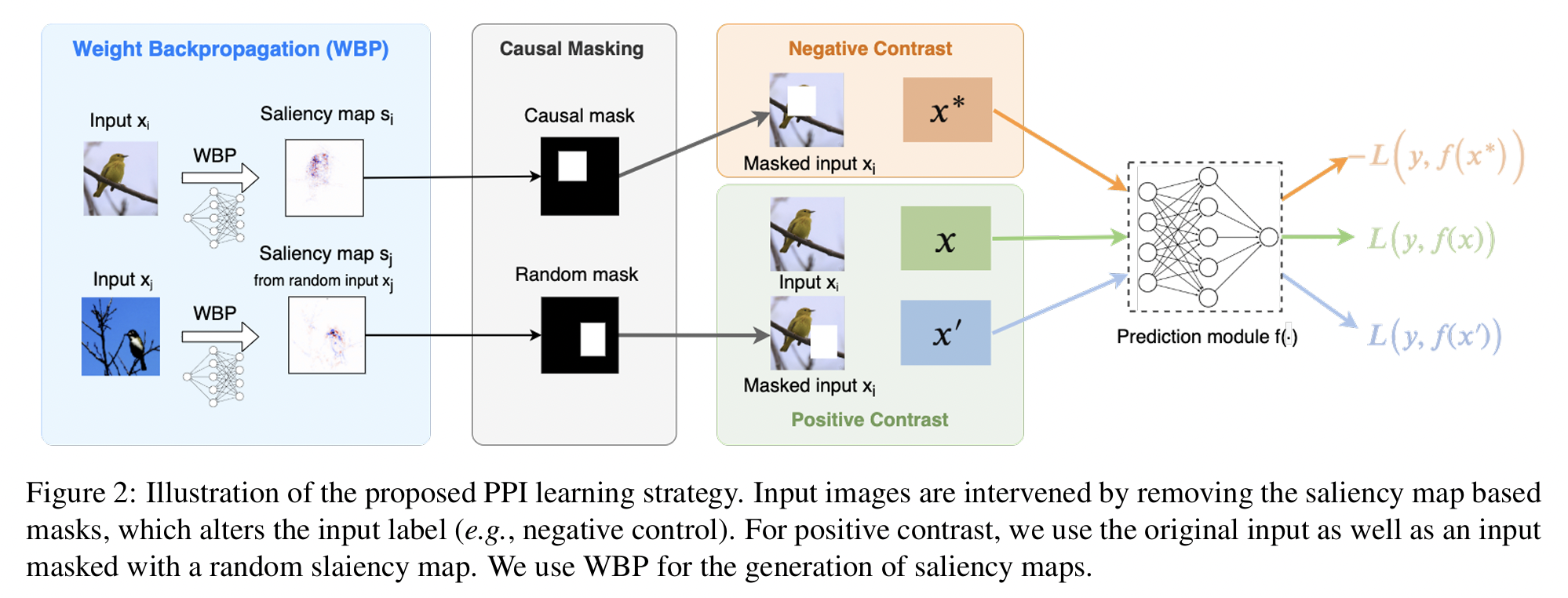
b) Self-supervised contrastive learning
Graph contrastive invariant learning (GCIL)
-
Mo et al. [173]
-
Graph generation based on the SCM
-
Limitation of previous works: Traditional graph CL is affected by non-causal information
-
GCIL
-
Uses an SCM to describe the graph generation process
-
Original graph \(G\): Divided into ..
- (1) A set of causal variables \(C\)
- (2) A set of non-causal variables \(S\)
-
Intervene causally on the noncausal variable \(S\)
\(\rightarrow\) T ensure that the variable satisfies the following equation:
\(P^{d o\left(S=s_i\right)}(Y \mid C)=P^{d o\left(S=s_j\right)}(Y \mid C)\).
-
-
Summary: Generates causal views to model interventions on non-causal factors from a graph perspective
